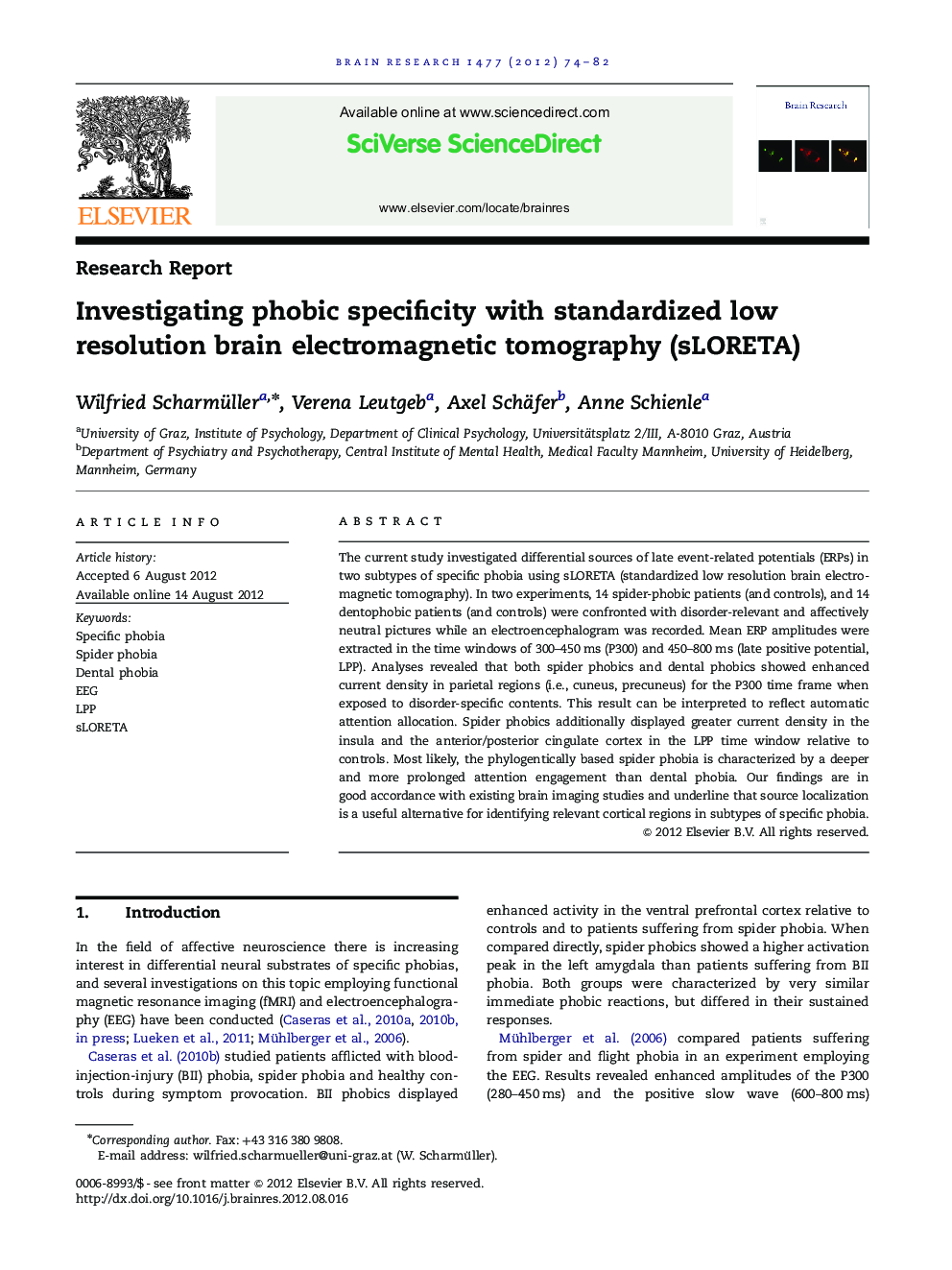| Article ID | Journal | Published Year | Pages | File Type |
|---|---|---|---|---|
| 4325021 | Brain Research | 2012 | 9 Pages |
The current study investigated differential sources of late event-related potentials (ERPs) in two subtypes of specific phobia using sLORETA (standardized low resolution brain electromagnetic tomography). In two experiments, 14 spider-phobic patients (and controls), and 14 dentophobic patients (and controls) were confronted with disorder-relevant and affectively neutral pictures while an electroencephalogram was recorded. Mean ERP amplitudes were extracted in the time windows of 300–450 ms (P300) and 450–800 ms (late positive potential, LPP). Analyses revealed that both spider phobics and dental phobics showed enhanced current density in parietal regions (i.e., cuneus, precuneus) for the P300 time frame when exposed to disorder-specific contents. This result can be interpreted to reflect automatic attention allocation. Spider phobics additionally displayed greater current density in the insula and the anterior/posterior cingulate cortex in the LPP time window relative to controls. Most likely, the phylogentically based spider phobia is characterized by a deeper and more prolonged attention engagement than dental phobia. Our findings are in good accordance with existing brain imaging studies and underline that source localization is a useful alternative for identifying relevant cortical regions in subtypes of specific phobia.
► Spider phobia relevant ERP generators were found in the insula and OFC. ► Dental phobia relevant ERP generators were restricted to the precuneus. ► Both phobia groups showed parietal activation sources. ► The differences point to a phylogenetic vs. ontogenetic origin of the phobias.
